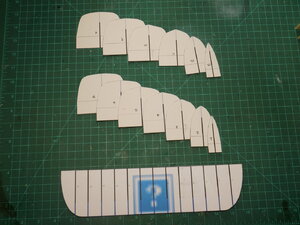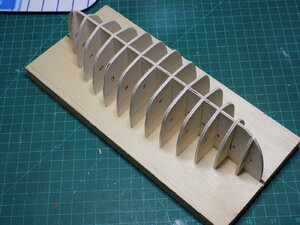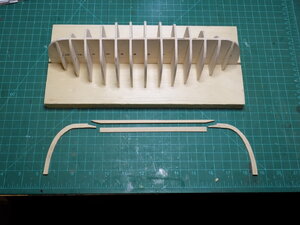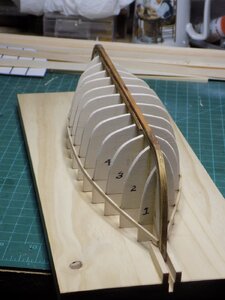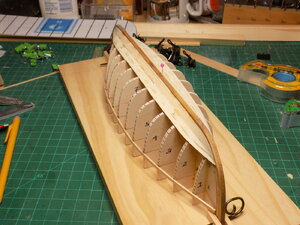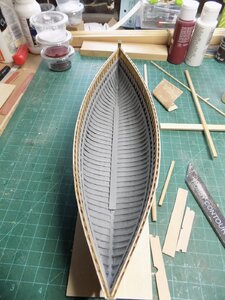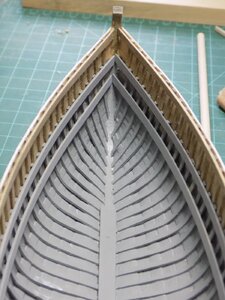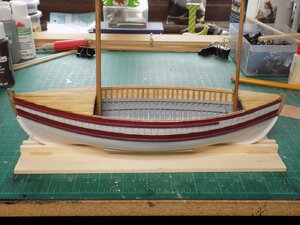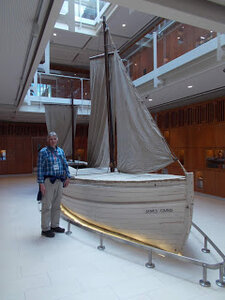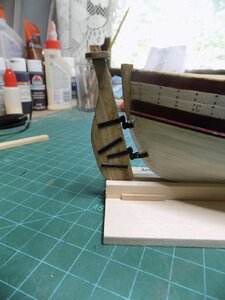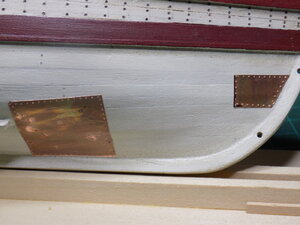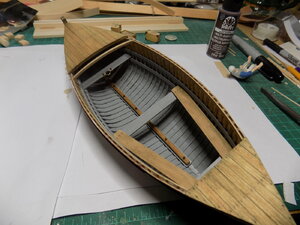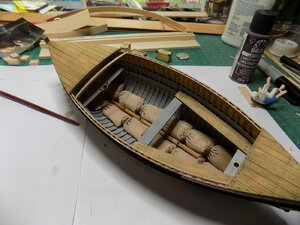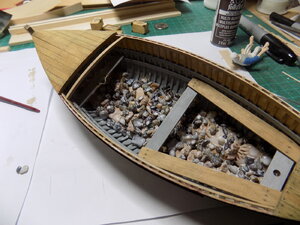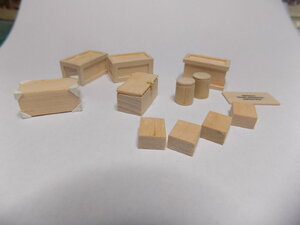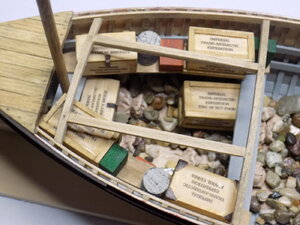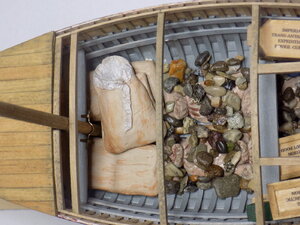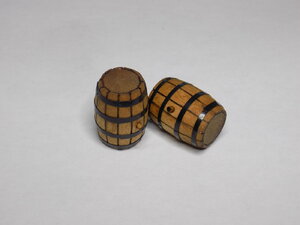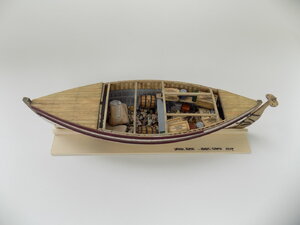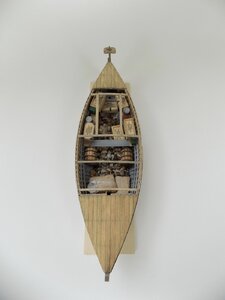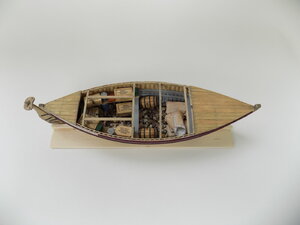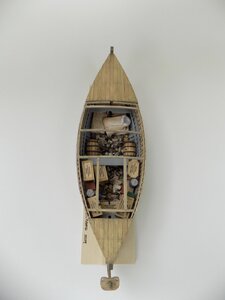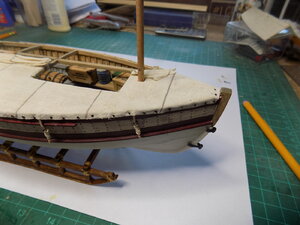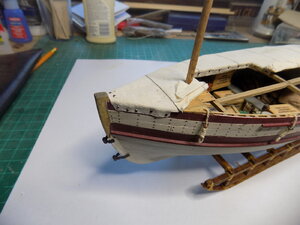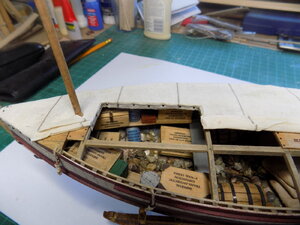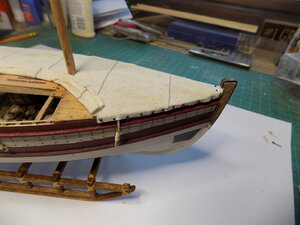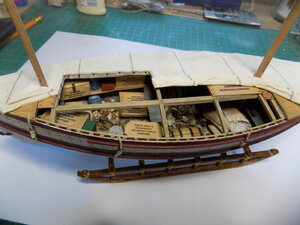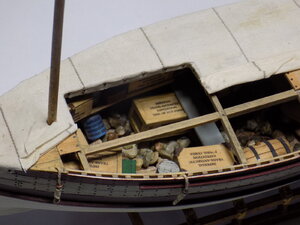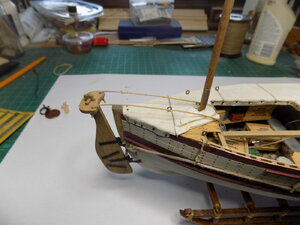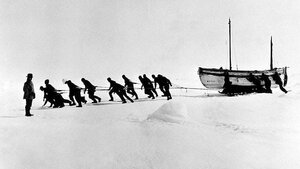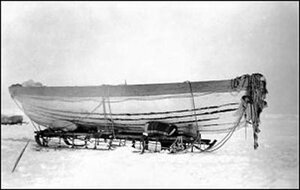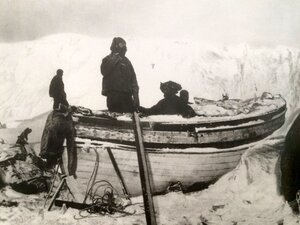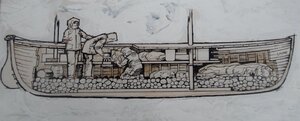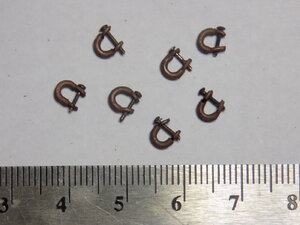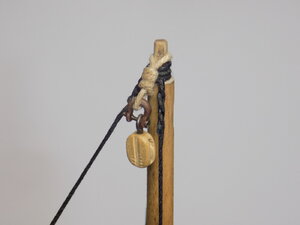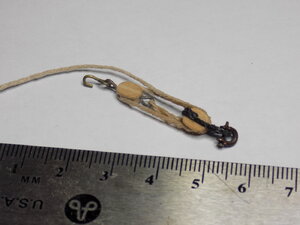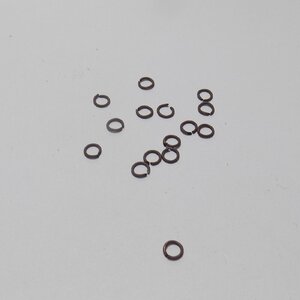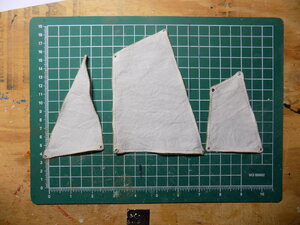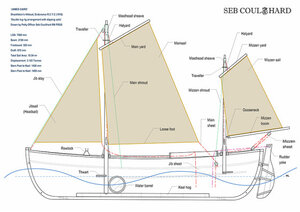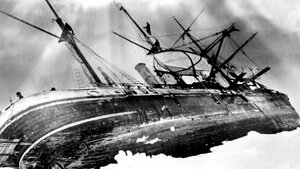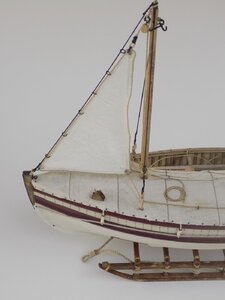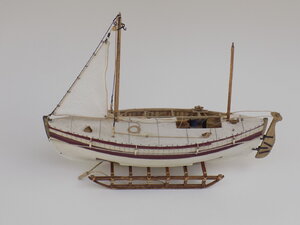Some of the SoS members have suggested that I create a blog for my latest model, the James Caird. I am well into the work on this model, but can provide some information and images of its early stages so that readers of this blog can see what I have done so far. I am building the model with the modifications created by the carpenter Henry "Chippy" McNeish while the Endurance crew was trapped on the ice as well as the final modifications made by McNeish in Elephant Island prior to the 800 nautical mile voyage to South Georgia Island (yet to come).
The initial modifications made to the James Caird by McNeish while on the ice included raising the gunwale of the double-ended whaler carried by the Endurance by almost two feet by the addition of three additional planks, using wood from the ruined Endurance and one of the other lifeboats, and the construction of "whalebacks" at the bow and stern. The latter would greatly reduce the amount of water that would splash into the boat in heavy waves.
The final modifications made on Elephant Island included building a lattice-like framework over the open boat using sled runners, installing a flimsy deck over these supports using the lids of plywood packing cases, and covering the whole topsides with a canvas covering stitched together from sections of sail. A 5' by 2.5' "cockpit" was left open just in front of the mizzen mast so that the crew could work the halyards, sheets, and rudder.
There was some damage to the hull because of the hauling of the boats across the ice on sledges and because of collisions with ice floes during the 9-day trip taken by the three remaining boats from the edge of the melting ice to Elephant Island. The damage was repaired by McNeish on Elephant Island in a variety of ways, one of which involved creating patches using the Muntz metal flotation tanks originally installed on the Caird when it was built as a lifeboat. The remarkable work by McNeish to transform the boat for its open sea journey was accomplished using only a hammer, a saw, a chisel, and an adze.
I intend to make the model represent the boat just before its launching, with all of the above modifications including the stone ballast, supplies, sleeping bags, brass patches, and figures of Shackleton and some of the Endurance crew.
I want this model to tell the incredible story of the preparations for Shackleton's incredible 16-day voyage across the South Atlantic, in winter, from one speck of land - Elephant Island - to another - South Georgia. This model certainly fits with my plan to model small open boats that have made historic voyages.
Hope you enjoy the postings that will appear below. As I stated above, the first few will be historical, that is, they will show work I have done on the model to date. Once I am caght up with that, I will start posting my progress in "real time".
The initial modifications made to the James Caird by McNeish while on the ice included raising the gunwale of the double-ended whaler carried by the Endurance by almost two feet by the addition of three additional planks, using wood from the ruined Endurance and one of the other lifeboats, and the construction of "whalebacks" at the bow and stern. The latter would greatly reduce the amount of water that would splash into the boat in heavy waves.
The final modifications made on Elephant Island included building a lattice-like framework over the open boat using sled runners, installing a flimsy deck over these supports using the lids of plywood packing cases, and covering the whole topsides with a canvas covering stitched together from sections of sail. A 5' by 2.5' "cockpit" was left open just in front of the mizzen mast so that the crew could work the halyards, sheets, and rudder.
There was some damage to the hull because of the hauling of the boats across the ice on sledges and because of collisions with ice floes during the 9-day trip taken by the three remaining boats from the edge of the melting ice to Elephant Island. The damage was repaired by McNeish on Elephant Island in a variety of ways, one of which involved creating patches using the Muntz metal flotation tanks originally installed on the Caird when it was built as a lifeboat. The remarkable work by McNeish to transform the boat for its open sea journey was accomplished using only a hammer, a saw, a chisel, and an adze.
I intend to make the model represent the boat just before its launching, with all of the above modifications including the stone ballast, supplies, sleeping bags, brass patches, and figures of Shackleton and some of the Endurance crew.
I want this model to tell the incredible story of the preparations for Shackleton's incredible 16-day voyage across the South Atlantic, in winter, from one speck of land - Elephant Island - to another - South Georgia. This model certainly fits with my plan to model small open boats that have made historic voyages.
Hope you enjoy the postings that will appear below. As I stated above, the first few will be historical, that is, they will show work I have done on the model to date. Once I am caght up with that, I will start posting my progress in "real time".





